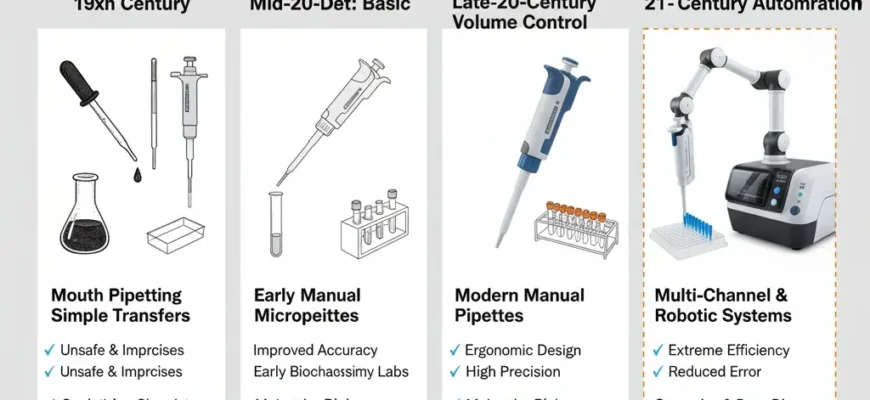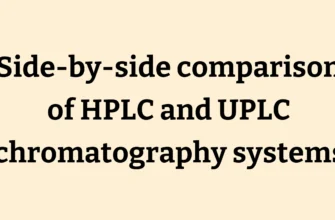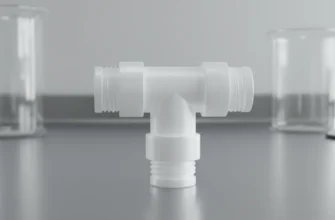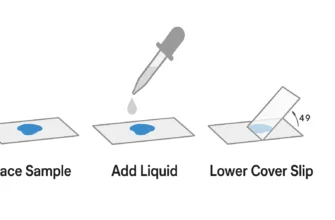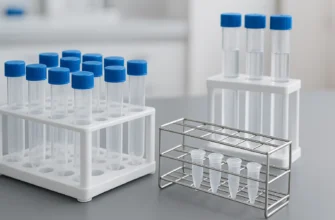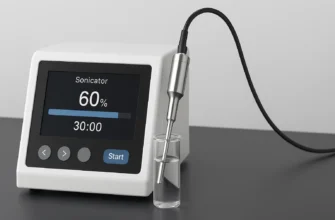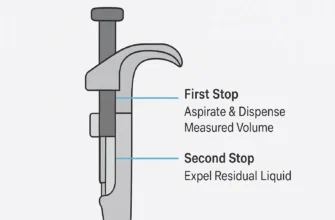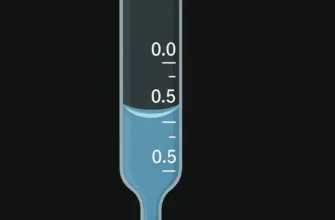In the intricate world of scientific research, from groundbreaking molecular biology to precise analytical chemistry, the success of an experiment often hinges on the accurate measurement and transfer of minute liquid volumes. Here, the pipette reigns supreme. Far more than a simple tube, this fundamental laboratory tool is the linchpin of reproducibility, ensuring that reagents, samples, and solutions are handled with exacting precision. The ubiquity and importance of this instrument are reflected in its market size; the global pipette market was valued at $1.538 billion in 2020 and continues to grow, underscoring its indispensable role in laboratories worldwide, as noted by IndustryARC. This article delves into the critical functions, underlying science, and diverse applications of pipettes, providing a comprehensive guide to mastering this essential skill for any chemist or scientist.
The Indispensable Role of Pipettes in Modern Chemistry
What is a Pipette? A Fundamental Laboratory Tool
A pipette is a laboratory tool designed for the precise transfer of a measured volume of liquid. Available in a vast array of designs—from simple glass tubes to sophisticated electronic devices—all pipettes share a common purpose: to aspirate (draw up) a specific quantity of fluid and dispense it accurately into another container. They are the primary instruments for any task involving liquid handling, forming the backbone of countless experimental protocols.
Why Precision Liquid Handling is Critical in Chemistry
In chemistry, the stoichiometry of a reaction, the concentration of a solution, and the performance of an analytical assay are all directly dependent on the volumes of the components involved. A minor error in liquid handling can cascade into significant experimental failure, leading to incorrect results, wasted reagents, and lost time. Precision ensures that experiments are repeatable, results are reliable, and conclusions are scientifically valid. This demand for accuracy drives the entire liquid handling systems market, which was valued at nearly USD 4 billion in 2024, according to Precedence Research.
The Evolution of Pipetting: From Basic Transfer to Advanced Science
 Evolution of Pipettes: From Qualitative Transfers to High-Throughput Precision
Evolution of Pipettes: From Qualitative Transfers to High-Throughput Precision
The journey of the pipette began with simple glass tubes, like the Pasteur pipette, used for qualitative transfers. The development of volumetric and graduated pipettes introduced quantitative accuracy. The true revolution, however, came with the invention of the mechanical, piston-operated micropipette in the mid-20th century. This innovation enabled researchers to handle microliter volumes with unprecedented precision, paving the way for the explosion in molecular biology and biotechnology. Today, electronic and multichannel pipettes continue this evolution, enhancing throughput, ergonomics, and accuracy.
The Science Behind the Pipette: Understanding Liquid Handling Mechanics
Air Displacement Pipettes: Principles and Applications
The most common type of micropipette found in modern labs is the air displacement pipette. This mechanical pipette operates with a piston that moves within a cylinder, creating a vacuum to aspirate liquid. An air cushion separates the piston from the liquid sample within the disposable tip. When the plunger is depressed, this air is expelled; upon release, the vacuum draws the liquid into the tip. Air displacement pipettes are highly accurate for aqueous solutions but can be affected by atmospheric pressure, temperature, and the physical properties of the liquid.
Positive Displacement Pipettes: When and Why They are Essential for Challenging Liquids
For viscous, volatile, or dense liquids where an air cushion would introduce errors, the positive displacement pipette is the superior choice. In this design, a disposable piston is integrated directly into the tip, making direct contact with the liquid. When the plunger is operated, this internal piston moves, aspirating and dispensing the sample without an intervening air gap. This mechanism eliminates errors from evaporation, aerosol formation, and viscosity, making positive displacement pipettes essential for applications in analytical chemistry and handling challenging reagents.
The Physics of Volume Measurement: Meniscus, Calibration, and Environmental Factors
Accurate liquid measurement depends on understanding physical principles. The meniscus—the curve at the surface of a liquid—must be read consistently (typically from the bottom of the curve) for glass pipettes. For all pipettes, regular pipette calibration is non-negotiable for maintaining accuracy. Calibration, often a gravimetric process of weighing a dispensed volume of distilled water, verifies that the device performs within specified tolerances. The growing emphasis on this process is evident in the global pipette calibrators market, projected to advance at a CAGR of 6.5% from 2023 to 2028, as reported by MarketsandMarkets.
Factors Affecting Pipetting Accuracy: Temperature, Viscosity, and Vapor Pressure
Several environmental and liquid-specific factors can compromise pipetting accuracy. A temperature difference between the pipette, the liquid, and the ambient air can cause the air cushion in an air displacement pipette to expand or contract, altering the aspirated volume. High viscosity liquids flow slowly, requiring slower aspiration and dispensing speeds to prevent inaccuracies. Similarly, liquids with high vapor pressure (volatile liquids) can evaporate into the air cushion, leading to less liquid being dispensed than intended. Proper pipetting technique can mitigate these issues.
Types of Pipettes and Their Strategic Use in the Chemistry Laboratory
Volumetric Pipettes: The Gold Standard for Ultra-Precise Volume Measurement
When a single, fixed volume must be measured with the highest possible accuracy, the volumetric pipette is the instrument of choice. This glass pipette is characterized by a long, narrow stem and a large bulb in the center, with a single graduation mark. It is calibrated to deliver (TD) a specific volume (e.g., 10.00 mL) with extremely high precision, making it indispensable for preparing standard solutions and performing titrations in analytical chemistry.
Graduated Pipettes (Serological & Mohr): Flexibility for Variable Volume Transfers and Dilutions
For applications requiring variable volumes, graduated pipettes offer greater flexibility. These glass or plastic pipettes have volume markings along the side. Serological pipettes are calibrated to be blown out, meaning the last drop in the tip is part of the measured volume. Mohr pipettes, in contrast, are calibrated for drainage between two marks and should not be fully emptied. Both types are commonly used with pipette controllers for safe and efficient operation when preparing dilutions or adding reagents.
Micropipettes: Enabling Precision at the Microliter Scale
Micropipettes are adjustable, air displacement pipettes that are essential for molecular biology, biochemistry, and modern chemistry. They are designed to accurately handle volumes from less than 1 µL to 1000 µL (1 mL). They use disposable pipette tips to prevent cross-contamination and come in various volume ranges. Advanced versions include the electronic pipette, which uses a motor to automate aspiration and dispensing, reducing hand fatigue and improving consistency.
Pasteur and Transfer Pipettes: Simple Handling for Non-Volumetric Applications
The simplest forms are Pasteur pipettes (glass) and transfer pipettes (plastic). These are not calibrated for precise volume measurement but are invaluable for qualitative tasks like transferring liquids between containers, removing supernatants, or adding reagents dropwise. Their simplicity and low cost make this disposable pipette a staple in every lab.
Specialized Pipettes: Repeat Pipettes for High-Throughput Dispensing
For tasks involving repeated dispensing of the same volume, such as filling multiple wells of a microplate, repeater pipettes and multichannel pipettes offer a significant efficiency boost. A repeater pipette can aspirate a large volume and then dispense it in a series of precise, equal aliquots. A multichannel pipette features multiple heads (typically 8 or 12), allowing for the simultaneous aspiration and dispensing of liquids into an entire row or column of a microplate.
Core Functions of Pipettes in Chemistry Lab Workflows
Accurate Reagent Preparation: Ensuring the Integrity of Chemical Reactions
The foundation of any successful chemical experiment is the correct preparation of reagents. Pipettes are used to measure precise volumes of stock solutions, solvents, buffers, and catalysts. An error at this stage can alter concentrations and compromise the entire downstream workflow, making accurate pipetting the first step toward reliable data.
Precision Sample Preparation for Analytical Techniques
Analytical chemistry techniques like chromatography (HPLC, GC) and spectroscopy (UV-Vis, AAS) require samples and standards to be prepared with exceptional accuracy. Volumetric and micropipettes are used to dilute samples to the correct concentration range for analysis, ensuring that quantitative measurements are both accurate and reproducible.
Serial Dilutions: Mastering Concentration Gradients for Biological and Chemical Assays
Creating a serial dilution—a stepwise dilution of a substance in solution—is a fundamental technique in both biology and chemistry. It is used to create calibration curves, determine enzyme kinetics, and find the optimal concentration for an assay. The accuracy of each pipetting step is cumulative, meaning precise liquid handling with a micropipette is essential for the integrity of the entire dilution series.
Chemical Reaction Setup and Monitoring: Controlled Addition and Aliquoting
Pipettes allow for the controlled addition of reactants to a chemical reaction. They can be used to add a precise amount of a catalyst to initiate a reaction or to take small aliquots over time to monitor its progress via analytical methods. This control is crucial for studying reaction kinetics and optimizing yields.
Quality Control and Assurance: Maintaining Standards in Chemical Manufacturing and Research
In industrial and pharmaceutical settings, pipettes are central to quality control (QC) and quality assurance (QA). They are used to sample raw materials, test in-process products, and verify the concentration of final formulations. The pharmaceutical sector’s reliance on this precision is immense; it held the largest revenue share of 59.6% in the pipettes market in 2023, as highlighted by Business Research Insights.
Mastering Pipetting Technique for Reproducible Chemistry Results
Fundamental Pipetting Practices: Aspiration, Dispensing, and Blow-Out
Proper pipetting technique begins with fundamentals. Always insert the pipette tip just below the surface of the liquid to avoid aspirating air. Aspirate and dispense liquids smoothly and consistently by controlling the plunger. When dispensing, touch the tip to the side of the receiving vessel to ensure all liquid is transferred by capillary action. For serological pipettes or when using the “blow-out” feature on a micropipette, expel the last drop to deliver the full calibrated volume.
Forward vs. Reverse Pipetting: Optimizing for Different Chemical Properties
Forward pipetting is the standard technique: depress to the first stop, aspirate, then depress to the second stop (the blow-out) to dispense. For viscous or volatile liquids, reverse pipetting is superior. In this method, the plunger is depressed completely to the second stop, the liquid is aspirated, and then it’s dispensed by depressing only to the first stop, leaving a small amount of liquid in the tip. This prevents splashing and compensates for liquid that may cling to the tip wall.
Advanced Techniques for Challenging Liquids
Beyond reverse pipetting, handling challenging liquids requires additional considerations. Pre-wetting the pipette tip—aspirating and dispensing the liquid back into the source container a few times—is crucial for volatile solvents. This saturates the air cushion with vapor, preventing evaporation during the actual transfer. For viscous liquids, pausing after aspiration allows the full volume to be drawn into the tip.
Common Pipetting Errors in Chemistry and How to Avoid Them
Common errors include rapid plunger movement, incorrect immersion depth, using the wrong size pipette for the volume, and reusing tips between different reagents. These can lead to inaccurate volumes, bubble formation, and cross-contamination. Avoiding these pitfalls requires deliberate practice and adherence to proper technique. According to international standards like ISO 8655, a high-quality pipette should exhibit minimal error; for example, a 100 µL pipette should have an inaccuracy of less than ±0.8%, as outlined by Fisher Scientific.
The Critical Role of Pipette Tips in Chemical Analysis
The Science of Pipette Tip Materials and Design
Pipette tips are not just accessories; they are a critical component of the pipetting system. Most are made from polypropylene for its low surface adhesion and good chemical resistance. The design of the tip, particularly the orifice and internal surface, affects liquid retention and dispensing accuracy. Specialized tips, such as low-retention tips with a hydrophobic inner surface, are available for viscous samples. The importance of these consumables is underscored by a market projected to grow to USD 1,850.4 million by 2035, according to Business Research Insights. High-quality disposable tips ensure a proper seal, prevent leaks, and are essential for accurate and contamination-free work.
Conclusion
The pipette is an emblem of precision in the chemistry lab. From the foundational volumetric pipette used in analytical chemistry to the advanced electronic, multichannel pipettes that power high-throughput screening, each type serves a strategic purpose in the pursuit of accurate and reproducible science. Understanding the mechanics of air and positive displacement, choosing the appropriate instrument for the task, and mastering the nuances of pipetting technique are not merely procedural skills; they are fundamental competencies that directly impact the quality and integrity of experimental outcomes. By focusing on proper technique, consistent calibration, and the use of high-quality pipette tips, researchers can mitigate errors and ensure their liquid handling workflows are robust and reliable. Mastering the pipette is, in essence, mastering a cornerstone of modern scientific practice.

